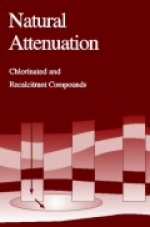Tab Article
Natural attenuation, sometimes called "intrinsic remediation," is an increasingly important component of site closure strategy. At first maligned as a "do nothing alternative," natural attenuation is now being recognized as a legitimate approach that can supplement and sometimes even supplant more costly approaches. Having gained more widespread acceptance as an option at hydrocarbon-contaminated sites, natural attenuation is now beginning to emerge as an option for sites contaminated with chlorinated solvents and other recalcitrant compounds such as MTBE. Natural Attenuation: Chlorinated and Recalcitrant Compounds brings together the latest research and field applications, with chapters covering field characterization and monitoring, transformation processes, natural attenuation of MTBE, and a number of natural attenuation case studies.


